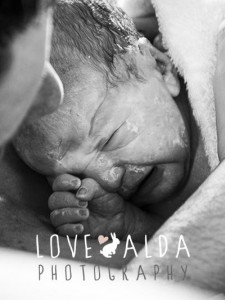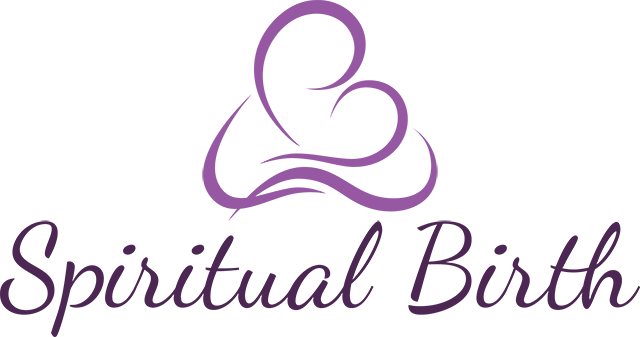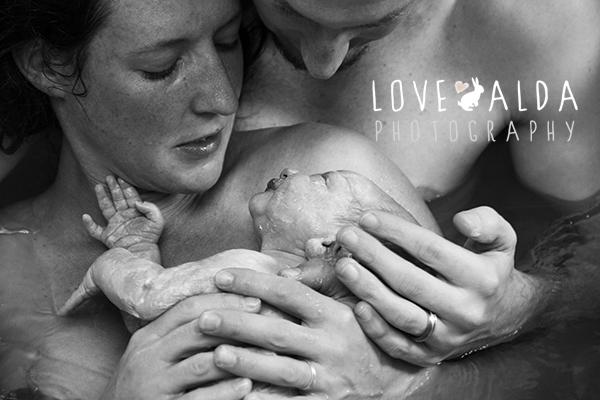Natural physiological birth is an involuntary process orchestrated by neurochemicals and hormones that unfurl a woman’s body, enabling her to give birth to a baby and make the transition to motherhood. Physiological birth is directed from within the limbic system of the brain and body in response to and

in collaboration with the endocrine system of the baby and placenta. This allows a woman to respond and surrender to ancient primal patterns and physical instincts. It can occur best when a mother is not disturbed during the process of labour and birth. Giving birth physiologically is not easy in our highly medicalized and fear driven cultural climate. Giving birth is a function of our bodies and can become like sleeping or breathing – an autonomous process. But as women are reaching for further education and intellectual learning it appears to be accompanied by a separation from that which is instinctual in our bodies. It appears to be harder for us as women to lose our inhibitions during childbirth and allow our primitive selves to come to the fore.
Sadly it also appears that midwives are being trained in increasingly medicalized ways and do not learn how to respond to what is ostensibly normal birthing behaviour. Doctors and Obstetricians are trained to manage emergencies and interventions and it is hard for them not to see a healthy pregnant or labouring woman through these lenses of perception.
Stages of Labour
Active or real labour usually begins when a woman’s cervix is already 4-6cm dilated. Before this, labour is not active but rather latent and may proceed slowly, depending on the woman and her constitution. Accepted theory divides labour into distinct stages and is useful as a guide while learning to observe a woman in labour.
In reality, labour is a journey culminating in birth and it is not always easy to distinguish one stage from another without performing invasive vaginal examinations, which may in and of themselves traumatize a mother and cause the labour to shut down. To perform vaginal frequent and/or 4 hrly examinations while a woman is in latent phase is for the most part unnecessary when a woman is progressing well and exhibiting appropriate labour behaviour.

A woman in early labour is best staying at home with a calm, familiar person, dim lights, privacy, warmth and peacefulness. Usually women will go to the hospital too soon, assuming the hospital is the best place to be in labour.
Latent labour is an involuntary process of the body, and it can be slowed down when a woman is fearful, tense or operating in her thinking brain, all of which come into play the minute we step into a hospital or make contact with dominant, fearful, tense or anxious thinking staff.
Although hospitals can be the safest place for a woman who needs medical attention when there are complications or a higher risk need, a hospital can also be the worst place to be for a healthy woman in early labour – it is full of worried people, rules and deadlines, bright lights and clinical technology – all items that will shut down a woman’s natural body functions and cause her labour to slow down at snails pace or cease altogether. And yes, cervical dilation can stop for hours, days, and sometimes weeks when a woman is tense or fearful. There is, however, a small percentage of women who may need to have a caesarian section and who are obviously safer being cared for in a hospital setting. And it must be mentioned that while women in developed countries experience the zenith of medical attention during pregnancy and birth, women in developing countries die in childbirth due to lack of care during childhood and pregnancy and difficult access to insufficient medical resources.
Staying at home during labour or birth is safest when midwives and doctors collaborate to share resources if they are required.
Preparing for Physiological Birth
A healthy mother in late pregnancy should be preparing her mind and body for the onset of stronger sensations than she has hitherto experienced. Ideally she is calm and using skills she has learnt during her pregnancy such as:
- rythmic deep breathing and
- relaxation techniques allowing her body to release all tension and anxiety.
- Visualizing her baby inside the womb in a state of deep relaxation and fearlessness, she is able to transcend the discomfort and
- connect with her inner strength as the powerful bodily sensations increase in intensity.
Dr Michel Odent recommends that women rest in a warm dark and peaceful place in early labour, thereby conserving the energy they will need when later sensations are strong. The rythmic ebb and flow of “contractions’ draws a woman into herself and away from engaging with the outer world, protecting the pulsatile release of oxytocin responsible for uterine contractility.
Every woman is different and women may develop many defensive and resistant layers of self protection, which need to soften and yield before she can access her full primal imprint for birth. As the sensations become more painful the mother enters a transitional state – the cervix is more than 6-7cm open. The blood flow to the pelvic area is increased, the stretch receptors relay the need for endorphins and oxytocin to the pituitary gland. The release of these hormones and adrenaline prime a womans body for the greatest task of her life.
The birth attendant may feel anxious at this stage and want to “DO” something, intervene in some way, to ease the appearance of maternal discomfort. As labour progresses, the sensation of period pain just in front of the pubic bone increases, sometimes there is strong pain over the lower back, and more and more pressure around the whole pelvic area. When a woman is moaning,complaining, crying or shouting and releasing her tension and pain vocally, there is a tendency for birth attendants to want to “fix it” and make it better, easier for the birthing mother. This is not the same as remaining calm while offering support measures.
Undisturbed Physiological Birth
The truth is that any interference will affect the flow of labour and may potentially lead to serious iatrogenic complications, what is termed the “cascade of interventions”. These maternal birthing behaviours are part of the transitional stage of labour, are different for every woman, and are normal. Just before expulsive efforts begin in earnest, a mother’s body will:
- become round and voluptuous
- her nipples with darken and become erect,
- her lips will part and her face become more flushed
- The labia become darker and this melatonic pigmentation effect extends up between the buttocks to the sacral area
- she may shout cry, moan, groan and say expulsive things like ‘I cant do this’, ‘Get it out of me’
- As the mother becomes aware of the descending vertex and feels an uncontrollable urge to “go to the toilet” she engages her body in her expulsive efforts to give birth through a surge of ‘bearing down’.
- The vaginal and labial tissue is soft and elastic and will expand when given time to release the baby.
- There is no need for commands to “push”, neither is there a need to rush the expulsive stage (second stage of labour), when the baby’s heartbeat is within a normal range and the mother recovers by resting calmly between surges.

It is at this point that a birth attendant may feel fear that something will ‘go wrong’,or the anxiety that she will need to interface with the condescending medical hierarchy in the event of transfer, if it does go wrong. This response may be the result of internal anxieties or a sentient response to the mother’s overwhelming sensations and feelings of anxiety that she may not be able to complete the task. For the birth attendant, being ‘with’ the mother’s insecurities while simultaneously remaining grounded, alert and calm is a skill that will transmit confidence to the mother. The mother’s deepening trance-like state, her repetitive behaviour and childlike or unreasonable requests are part of the labour process.
The mother in labour may respond well to firm touch and holding. She draws psychic energy from a strong arm, or solid chest to lean on. She is sinking into a primal state and her body is doing its work. The percentage of women who give birth naturally varies according to the caregiver they choose. This should tell you something. In reality, most women are able to give birth vaginally and safely for both mother and baby. The very system intended to ‘save’ women from the possible emergencies of giving birth has become the impediment to the capacity to give birth naturally.
Preconception and childhood
Preconceptual care and prenatal care, especially the care of little girls, is extremely important to safeguard their future reproductive health from early childhood onwards. A girl child who has been malnourished and develops rickets or kwashiorkor is going to be at great risk in her pregnancies due to the possible bone and hip deformities these diseases can lead to. Equally, a girl who suffers from bulimia or anorexia can be at similar risk in her reproductive years.
Good nutrition is vital throughout a girl and woman’s life. A high protein diet of whole, organic food with vegetables and fruit supplemented with low GI carbohydrates provides the nutrients a girl child and woman needs to nourish her for the task of bearing children. A mother who has not been cared for well in her childhood is more at risk of developing epigenetic diseases such as diabetes or eclampsia during pregnancy. A woman who has incurred accidents and fractured her hips may not be able to give birth vaginally.
The right kind of preparation for childbirth is essential and mothers need to take full responsibility and seek the care that makes the heart and gut feel right and not be swayed by intellectual arguments or the fears of others. So many women pass the responsibility of their safety over to the obstetrician and then wonder what went wrong when they are not heard or listened to. Fighting for your rights as a woman must begin before pregnancy and birth, not during labour when you are vulnerable. Hypnobirthing and The Mama Bamba Way are examples of preparation styles that show evidence of successful outcomes with regard to natural birth. When the mother is calm, the obstetrician is more likely to be calm and perform fewer unnecessary interventions!
Neurology of Birth
There are several finely tuned body systems at work when a woman is pregnant or in labour and giving birth and they act at specific points ONLY IF ALL THE CONDITIONS ARE RIGHT. There are three main neurochemical systems used during labour and birth.
- The first one can be termed the social response system (SRS) that allows us to be relaxed when in the company of people we know and like and to engage socially in a responsive way.
- The second system is the passive response system (PRS) which ‘plays dead’or renders you immobile in the face of danger. This system will be triggered when you are flat on your back and the obstetrician/midwife is doing a vaginal examination. All natural bodily functions lose their tone when this system is activated and it can impede the progress of labour especially in the early stages.
The third system is the ‘fight or flight’ system (FFS) activated when a person is threatened, afraid, grieving. When this system is activated, it definitely impedes the progress of early labour, although it is however beneficial when released spontaneously right at the end of labour, just before the birth of the baby.

The Social Response System (SRS)
The social response system (SRS) state of being modulates social communication:
- by immobilizing the body
- lowering the heart rate
- inducing self soothing and calming behaviors and
- responsivity to social cues via the vagal nerve.
It is ‘immobilization without the fear’ and elicits relaxation and trust, so that bonding and social communication are facilitated.
Key to evoking this behaviour are unconscious responses to facial expressions, vocalizations and posture of others as well as to cues in the environment. This is where the importance of the birth companion or caregiver becomes critical. Is the birth companion tense, is the caregiver nervous, and how do they express or suppress their feelings without you as the mother being subliminally aware of their anxiety through their body language?
Professor Stephen Porges calls this neuroception, a kind of perception that happens below the level of conscious awareness in what is called the reptilian brain and will trigger, for instance, changes in heart rate, respiration, sweat glands or hair follicles, as well as activating one or both of the other two systems, PRS or SRS. These autonomic changes happen before conscious awareness.
The presence of a loving support person, patience, warmth, calm, knowledge and confidence in the body and its potential are essential ingredients in setting up the environment you want for a physiological birth. This does not mean that physiological labour and birth are always easy. Labour and birth, even the ‘good’ ones, are enormously difficult at times and require great courage and fortitude. A mother needs to work through her fears, her burden of lifetime trauma and her grief. This helps to free up her body for the task of birthing. A midwife with experienced powers of observation and the knack of collecting data without disturbing your flow is also essential.
Physiological Third Stage of Labour
The final step of true physiological birth is the birth of the placenta with the cord still attached to the baby wherever possible (third stage of labour).
- The baby should remain for at least 30-60 seconds BELOW the level of the mother’s abdomen (below the level of the placenta). This facilitates the transmission of the last bolus of blood to the baby before the placenta separates.
- The mother takes a few seconds to accept the sudden sensations of relief and may not be immediately ready to take her baby.
- When she is ready, she can be assisted to reach forward and lift her baby herself.
- It is most important, once the baby is in arms, NOT to DISTURB the mother and baby dyad. This helps to ensure the release of natural oxytocin from the pituitary gland that will aid in contracting the uterine muscle and thus expell the placenta spontaneously without unnecessary haemorrhage.
- The family awakens slowly and ecstatically to their joy and welcome the baby into their world.
- Birth attendants need to be still and silent(no chatting) at this time.
Conclusion
A baby who is birthed physiologically feels as if he has birthed himself and experiences the mother as co-operative and giving. The mother feels the success of her own stupendous achievement and it gives her confidence in herself both as a mother and a person. The scientification of love bears fruit when birth is physiological.


Beautiful


What an excellent empowering article! A fantastic read for a FTM like myself due in 3 weeks time and hoping for a fuss free Home water birth! Thank you very much for this!
Brilliant brilliant brilliant article Marianne! Do you mind if I share it?
Thank you, Marianne! Great article, well written and very needed! My only suggestion is to replace one word in this sentence: ‘Physiological birth is directed from within the limbic system of the brain and body in response…’- I believe that it works from the Reptilian part of the brain, the same part which is responsible for every cervix there is, inside our intestines, anus, etc and are purely physiological. Limbic system is governing our feelings and emotions, to my understanding. please, let me know if you’ve seen some latest research that I am not aware of, if it says that the limbic brain is in charge in birth. I learned that limbic is to experience the sensation and to register and memorize it on the cellular level during the formative period, but the reptilian is actually doing the doing. My best wishes and lots of love, Elena
Dear Elena, Thank you for your feedback and comment. The links between mind and body are difficult to study and you are correct, the limbic system is closely involved in modulating and processing our emotions. Information is integrated by both more primitive brain areas and higher cortical areas and then passed through the limbic system, particularly the amygdala. Descending pathways from the limbic system to the more primitive hypothalamus and brain stem (reptilian brain) also initiate both conscious and unconscious responses mediated by the autonomic, endocrine, immune and somatic motor systems. So I see the interactions as operating a bit like an orchestra with many different instruments playing simultaneously. It explains why a woman’s emotions will affect her ability to labour and give birth, so technically the term limbic system is not entirely correct. However, for simplicity I used the term to illustrate to the public what I mean. Many thanks again for pointing this out.Love Marianne
Wonderfully informative! Moving through fear and past trauma to enable birth. Being calmly responsible in the face of labor and delivery seems so rare and revolutionary when it’s honestly the most natural thing in the world. Great article. Many thanks.
Many thanks.
Wonderful article, full of fascinating details. Glad you mentioned low CI carbs, I’d go further and add good quality fats.
Yes cold pressed, virgin oils, raw nuts and seeds, fruits like avocado and mango high in natural oils and cocnut oil are all great for optimal health. Thank you Mary
Thank you Marianne. I’m so tired of seeing damaged mothers who are struggling with breastfeeding due to over-managed births. Interestingly, I had notification today on a free webinar on this very topic on Nov 12th. http://www.goldperinatal.com/conference/speakers/keynote-presentations-speakers
fantastic article Marianne!! Thanks! So full of what we need to know!